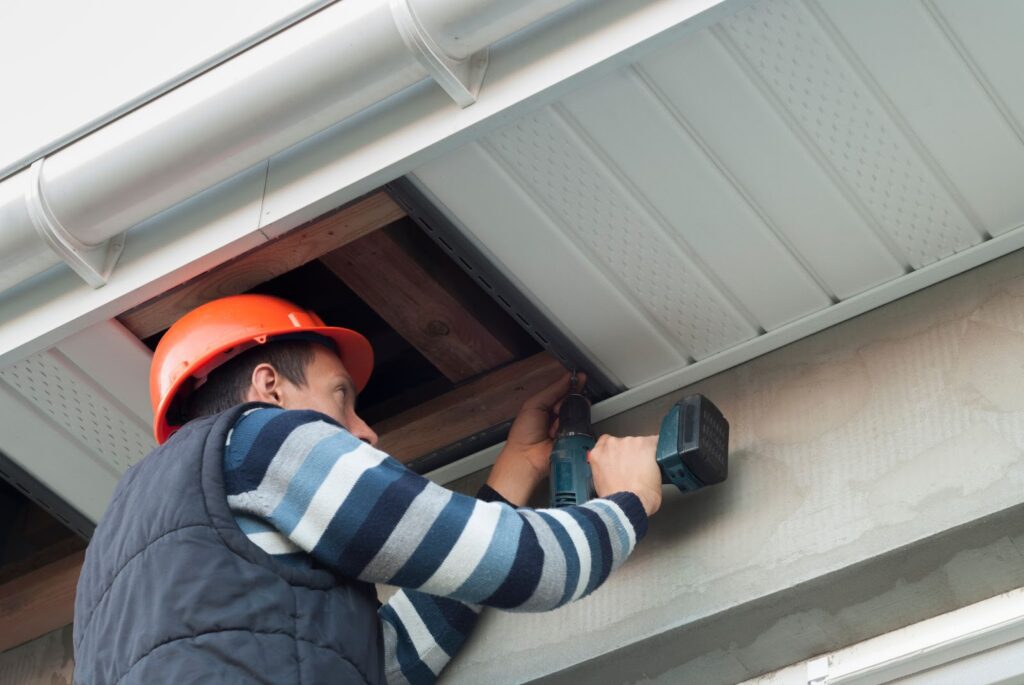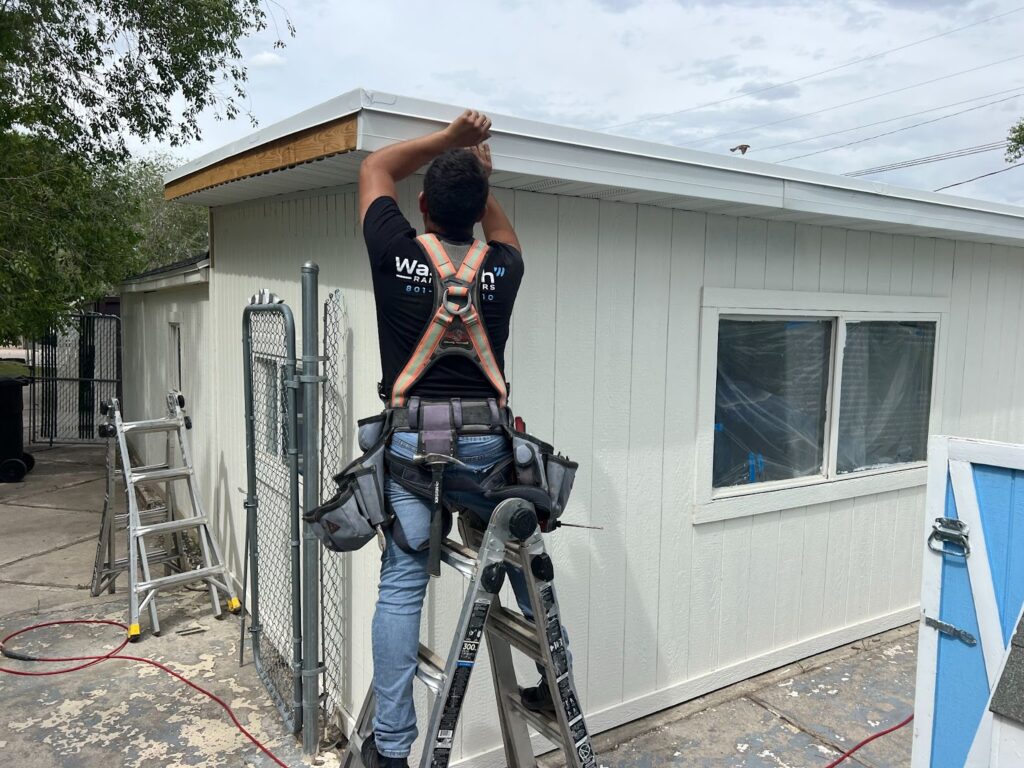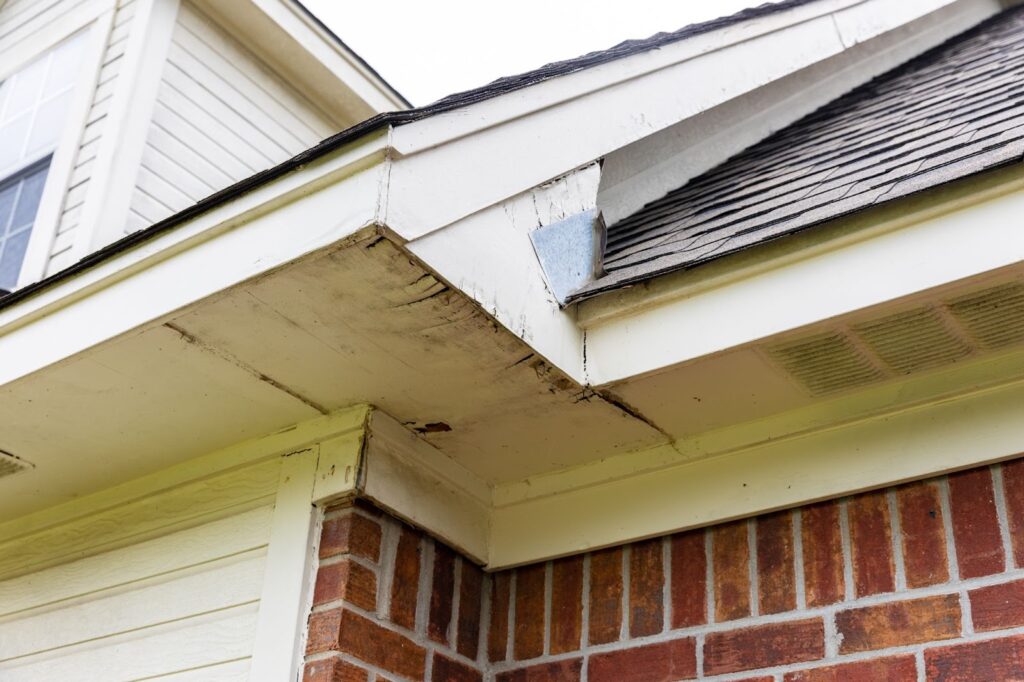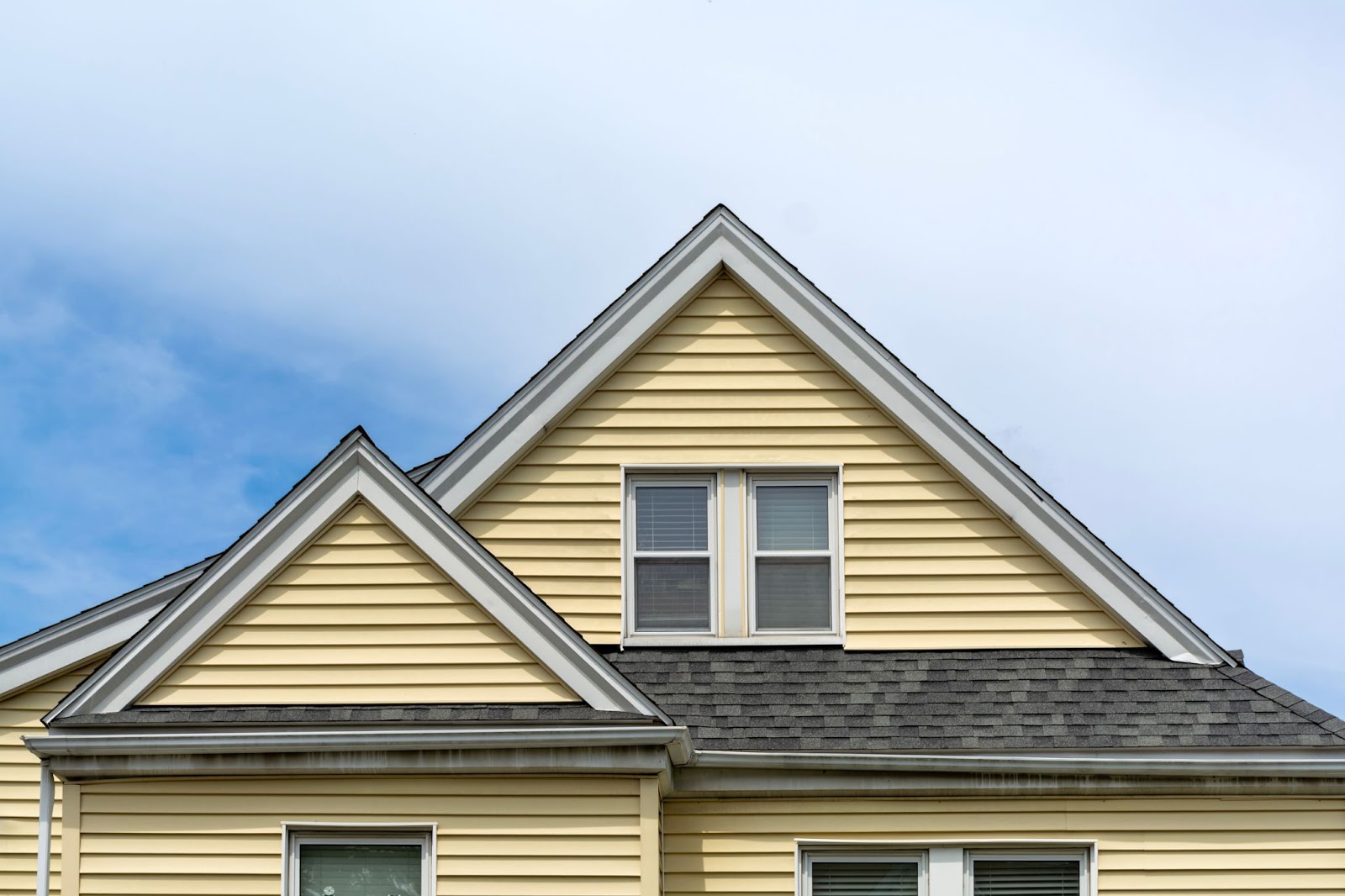When protecting and improving your home’s exterior, fascia and soffit installation might not be the first things that come to mind. These trim components play a big role in maintaining your home’s structural health and boosting curb appeal.
Together, they support your gutter system, protect your roofline from moisture damage, and help keep pests out. They create clean, finished lines along your eaves, adding polish to your home’s overall look.
In this blog, we’ll break down why these parts matter, how proper fascia board maintenance helps extend the life of your roof, and when it’s time to consider professional soffit and fascia installation. We’ll also look at options like residential vinyl soffit, which provides a low-maintenance and attractive upgrade.

What are fascia and soffit?
Fascia and soffit are part of your home’s exterior trim system, and while they might seem like small details, they’re for both function and appearance.
The fascia is the horizontal board that runs along the edge of your roof. It supports the bottom row of shingles and serves as the anchor for your rain gutters. Without a strong fascia board, gutters sag or pull away from the house, especially under the weight of heavy rain or snow.
The soffit is the underside of the eaves, the section that connects the roof edge to the wall of your home. Soffits have vents to allow airflow into the attic, helping regulate temperature and moisture. Without proper ventilation, your attic becomes a trap for humidity, leading to mold growth and wood rot.
Both parts work together to seal and finish the roofline. They help prevent animals and insects from nesting under your roof and protect your home’s structural components from water damage.
Why these components matter for home protection
Your home’s roof and gutter system rely on fascia and soffit to function correctly.
The fascia acts as a protective barrier against moisture and weather. It supports your gutters, meaning it must stay strong and level to keep water draining correctly. If the wood begins to rot or soften, gutter hangers loosen, leading to leaks, overflow, and potential structural damage.
The soffit, on the other hand, helps keep air flowing through your attic and roof cavity. When attic spaces become too warm or humid, they lead to ice dams in the winter and mold or mildew in warmer months. A properly installed and ventilated soffit system helps regulate airflow and protect the roofing system.
According to This Old House, “These vents create better air circulation and are often used in conjunction with other types of vents for optimal performance.”
Choosing durable, low-maintenance materials, like residential vinyl soffit, helps avoid many of the common problems homeowners face, such as cracking, warping, or pests getting in through unsealed gaps. If you have dated or damaged soffit or fascia, a professional soffit and fascia installation keeps the new materials fitted and flashed correctly to withstand weather and time.

How fascia and soffit impact curb appeal
Beyond function, fascia and soffit contribute to your home’s exterior appearance. These elements frame the roofline and create a finished edge between the roof and siding. When they’re clean, aligned, and in good shape, they give your home a well-maintained, polished look.
On the other hand, damaged fascia or stained, cracked soffit panels make even a freshly painted home look neglected. Peeling paint, visible water stains, or warped boards are among the first things people notice from the street or sidewalk.
Choosing the right materials affects aesthetics and durability. For example, a well-matched residential vinyl soffit system offers clean lines and long-lasting color that won’t peel or chip like painted wood. Refreshing your soffit and fascia greatly impacts exterior upgrades or improving resale value.

Common issues and signs of damage
Fascia and soffit may not get the same attention as siding or roofing, but they often show wear and tear first. It becomes extra apparent when water isn’t draining correctly from the gutters.
Watch for these common warning signs:
- Sagging or detached gutters, which point to rotting fascia or loosened brackets.
- Peeling paint or soft spots on the fascia board indicate moisture seeping into the wood.
- Stained or moldy soffit panels may indicate roof leaks or poor ventilation.
- Bird or insect nests in corners or eaves, suggesting gaps in the soffit or fascia.
Catching these issues early makes a difference. Regular inspections during gutter cleanings allow you to spot problems before they spread. In many cases, small repairs or simple fascia board maintenance prevent the need for full replacement.
Choosing the right materials and upgrades
The material you choose matters. Wood was once the most common option, but it requires regular painting and is vulnerable to rot, warping, and pests. Aluminum offers better resistance to moisture, but it dents and often costs more.
Many homeowners choose residential vinyl soffit for new installations and replacements. Vinyl is lightweight, moisture-resistant, and easy to maintain. It doesn’t peel or crack and comes in various finishes that match or complement your home’s exterior.
If your existing soffit or fascia is showing age, or if you’re replacing your gutters or roof, it may be time for professional soffit and fascia installation. Experts ensure the new materials are properly ventilated, flashed, and secured for lasting protection. They’ll also help you choose colors and styles that enhance your home’s appearance.
Professional installation and maintenance matters
While some homeowners may be comfortable tackling basic home repairs, soffit and fascia are not DIY-friendly. These components sit at a high point on your home and require precise measuring, cutting, and sealing around rooflines, corners, and vents. Poor installation leads to ventilation issues, water leaks, or uneven appearance.
It’s best to leave soffit and fascia installation to professionals. An experienced team knows how to properly install and vent each panel, protect vulnerable roof edges, and seal out moisture and pests. They’ll also install flashing where needed to prevent hidden leaks that rot roof sheathing or framing.
Better Homes and Gardens warns, “A vented soffit is useless if it gets covered with insulation, which often happens as a result of inexperienced installers or carelessness. Inspect your soffit from the attic to ensure it isn’t covered by insulation or other objects.”
Regular inspections and timely fascia board maintenance extend the life of your gutters, roof, and trim. If your materials are outdated or showing signs of damage, replacing them with durable options, like residential vinyl soffit, saves time, reduces future repairs, and gives your home a fresh look.
Update your home’s exterior with Wasatch Rain Gutters
Fascia and soffit may not be the first things you notice on a home, but they impact curb appeal and long-term protection. From supporting your gutters to improving airflow and sealing out pests, these components do more than look good.
If your fascia boards are rotting, your soffits are stained, or your roofline needs a refresh, Wasatch Rain Gutters is here to help. We specialize in high-quality soffit and fascia installation, fascia board maintenance, and durable solutions that last in Utah’s unique climate.Let us help you protect what matters most: your home. Contact Wasatch Rain Gutters today for a free estimate.

